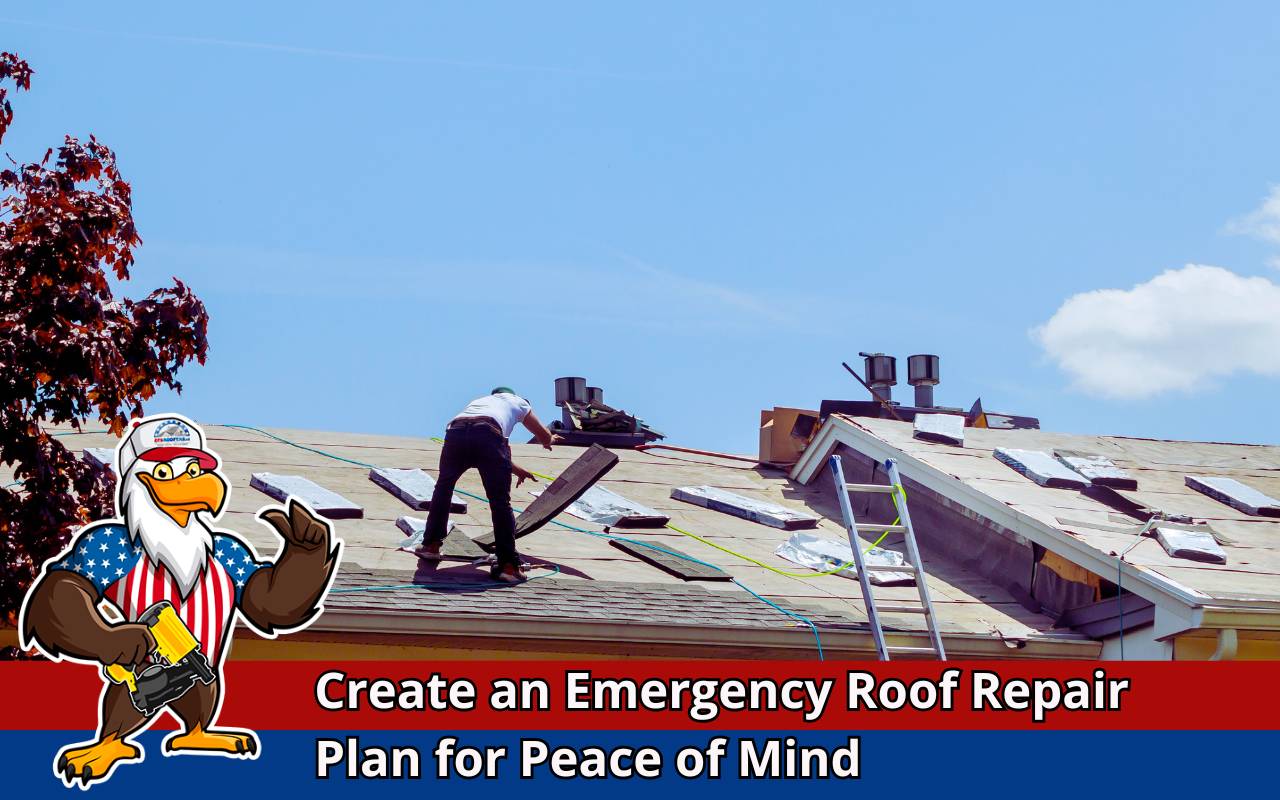
When the first drops of rain turn into a storm, panic often follows. An emergency roof repair plan prevents chaos by giving you a clear roadmap. Picture this: it’s midnight, and water drips into your living room. With a plan, you act fast, avoiding confusion. Weather is unpredictable, so preparation is essential. By building an emergency roof repair plan, you protect your home and gain peace of mind.
Assessing Roof Vulnerabilities
The first step in your emergency roof repair plan is assessing your roof’s weaknesses. Check the age of shingles, tiles, or membranes. Older materials break down faster. Look for missing shingles, cracked flashing, or worn sealant. Focus on valleys, soffits, and gutters where water gathers. Seasonal threats matter too—hail, wind, and extreme temperatures accelerate damage. Trim tree branches near your roof. Documenting these risks ensures your emergency roof repair plan prioritizes urgent areas.
Gathering Emergency Roof Repair Supplies
A strong plan includes a stocked supply kit. Consider storing these essentials:
- Heavy-duty tarps and corrugated plastic sheets
- Roofing cement, adhesive sealants, and galvanized nails
- A sturdy ladder, gloves, and a caulk gun
- Flashlights, batteries, and a portable power bank
- First-aid kit, construction tape, and weatherproof clipboard
Organizing tools ensures you can react quickly. Preparation keeps your emergency roof repair plan efficient during stressful moments.
Establishing Emergency Communication Protocols
Communication is key when a roofing crisis hits. Build a list of contractors, neighbors, and insurance contacts. Store digital and printed copies. Choose one household member as the main communicator. If power fails, consider radios or SMS alerts. Neighbors can provide updates if you are away. Documenting these details within your emergency roof repair plan guarantees smoother coordination during emergencies.
Identifying Trusted Roofing Professionals
Your plan should include vetted roofing contractors. Seek recommendations from neighbors or local stores. Confirm licenses, insurance, and references. Keep at least three options to avoid delays. Record their contact info and emergency response times. Having this network means your emergency roof repair plan can shift quickly from temporary patches to permanent solutions. Visit our roofing services page for professional support.
Creating a Step-by-Step Repair Strategy
A structured process reduces stress. Break tasks into these phases:
- Conduct a safety assessment
- Deploy tarps or sheeting to stop leaks
- Contact contractors or insurers
- Document all damage with photos
- Schedule permanent repairs
Following steps like these ensures your emergency roof repair plan is clear and actionable.
Securing the Roofing Area for Safety
Never compromise safety during repairs. Check the roof structure before climbing. Use slip-resistant boards and harnesses. Post caution tape around the property to warn others. Wear protective gear at all times. If conditions are dangerous, delay repairs. These precautions reinforce the safety of your emergency roof repair plan.
Documenting Before-and-After Condition
Insurance claims rely on clear documentation. Take photos of all damage. Record ceiling stains, warped drywall, or broken tiles. After repairs, repeat the process to show improvements. Store files digitally and keep backups. This routine is a vital part of every emergency roof repair plan.
Setting Up Post-Repair Inspection Plans
Repairs require follow-up checks. Schedule inspections after storms and quarterly throughout the year. Hire a licensed roofer annually to spot hidden issues. Record findings in a maintenance log. Proactive steps like these keep your emergency roof repair plan up to date. Explore our emergency roofing services for expert support.
FAQs About Emergency Roof Repair Plans
1. Why do I need an emergency roof repair plan?
It gives you a clear process to follow during unexpected roofing emergencies.
2. What supplies should I keep ready?
Tarps, sealants, ladders, safety gear, and basic repair tools are essentials for your plan.
3. How often should I update my emergency roof repair plan?
Review and update it every six months, or after significant weather events.
4. Can I rely only on temporary patches?
No, temporary patches are short-term. A professional must complete permanent repairs.
5. Where can I find reliable roofing professionals?
Check licensed contractors and explore roofing services for trusted experts.
Reviewing and Updating the Emergency Roof Repair Plan
Plans must evolve. Replace expired supplies, update contact lists, and adjust steps after each roofing incident. Hold review meetings with your household. Adapt strategies to improve response times. By keeping your emergency roof repair plan current, you ensure readiness for future crises.
Ensuring Preparedness for Any Roofing Crisis
A solid plan transforms panic into action. Assess risks, gather supplies, and connect with professionals. Keep reviewing and updating your approach. With a proactive emergency roof repair plan, you face storms with confidence. When ready, reach out through our contact page to connect with roofing experts.
